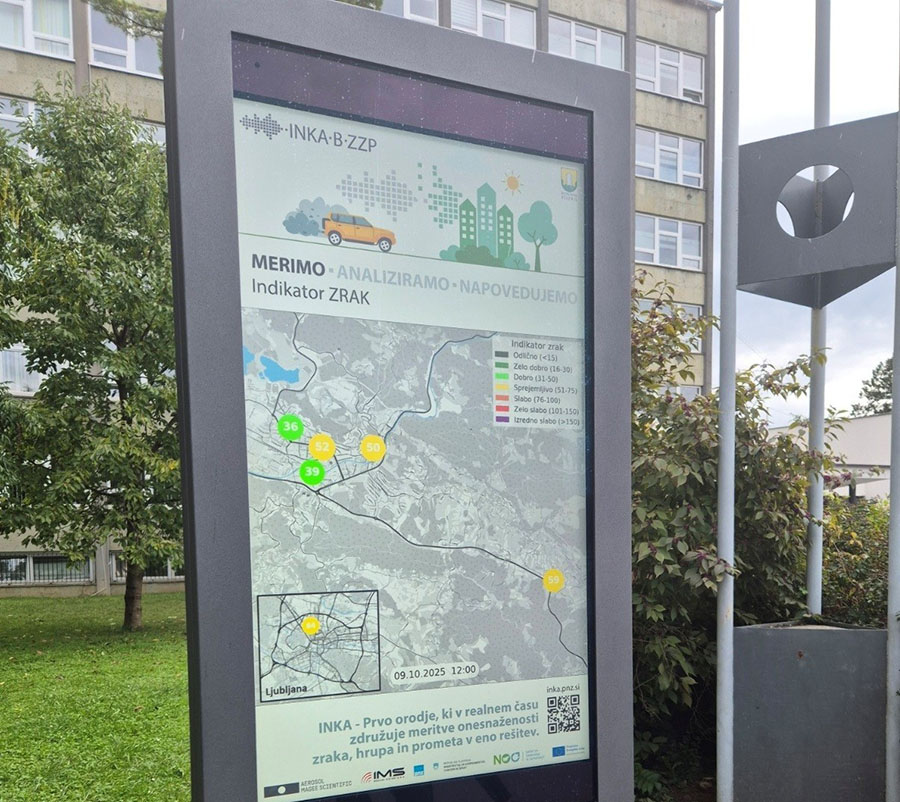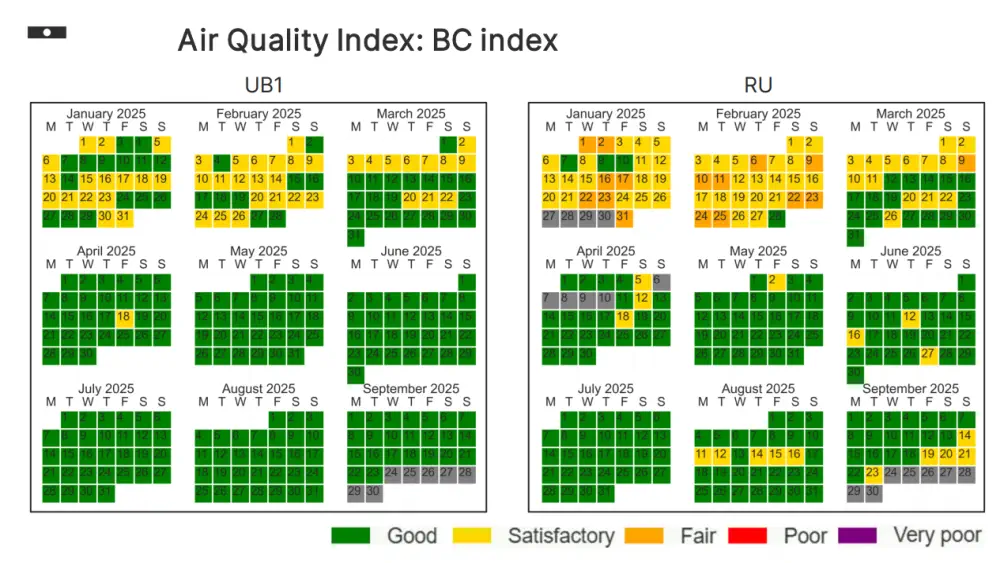
Velenje, a city in northeastern Slovenia, has made impressive progress in improving urban air quality thanks to changes in its district heating system. They replaced individual wood and coal-burning stoves with a centralized heating network which resulted in significantly reduced pollution from solid fuel combustion.
Indeed, levels of harmful carbonaceous aerosols, particularly black carbon (produced by solid fuel combustion), have dropped in the city center.
This success story shows how modern heating infrastructure directly improves public health and the quality of living, making Velenje a strong example of how cleaner energy solutions support sustainable urban living.
Outside the city, many households still rely on biomass burning for residential heating, especially in the winter. This source of heating leads to elevated levels of black carbon and organic aerosols, which can drift into Velenje and undermine local air quality efforts.
Fortunately, we have the tools to understand what’s really happening. With advanced monitoring instruments such as the Aethalometer and the Carbonaceous Aerosol Specification System (CASS), researchers can identify pollution sources and track seasonal variations with precision.
These tools show that wintertime pollution spikes are often linked to rural biomass burning, not only to urban traffic.

Charts above show black carbon measurements for solid fuel (biomass burning) in brown and liquid fuel (traffic) in grey across several sites: rural (RU), near road-traffic (TR) and urban background (UB).
To achieve lasting improvements in air quality and meet climate neutrality targets, city authorities must look beyond municipal borders. While district heating is a proven solution for urban areas, regional strategies are needed to address persistent rural emissions. This includes promoting cleaner heating alternatives, supporting energy efficiency programs, and enhancing public awareness.
The data from Velenje’s monitoring network underscores a critical insight: air pollution is a regional issue, and only coordinated action can deliver clean air for all.

Black carbon index helps authorities in communicating to citizens about the health risks of black carbon and promote behaviors that reduce emissions. Above it is evident that pollution in winter is worse in rural areas than it is in city.

Information panel in Velenje city center indicating quality of living for urban environment including air and sound pollution, and traffic counter. These data are used to forecast quality of living indicator for next 3 days.
This article is a summary of scientific presentation by Matic Ivančič, PhD, as part of INKA project.
Aerosol d.o.o.
Kamniška 39A
1000 Ljubljana
Slovenia, Europe
+386 1 4391 700
Aerosol USA Corp.
10157 SW Barbur Blvd Suite 100C
Portland, OR 97219 USA
+1 510 646 1600